Research on the Bearing Capacity and Sustainable Construction of a Vacuum Drainage Pipe Pile
Abstract
1. Introduction
2. Sustainable Construction of the Vacuum Drainage Pipe Pile in Soft Soil
2.1. Production Process of the Vacuum Drainage Pipe Pile
2.2. Construction Process of the Vacuum Drainage Pipe Pile
- (1)
- When the soil is soft, the universal prefabricated pipe pile driver is used to drive the vacuum drainage pipe pile. At this time, the energy consumption required for driving the pile is low;
- (2)
- One uses the pile driving disturbance and its own drainage channel to reduce the soil-squeezing effect, and the other connects an external vacuum machine to accelerate drainage and consolidation;
- (3)
- After the soil hardens, the pile composite foundation is formed so as to jointly bear the upper load and directly serve as the engineering pile;
- (4)
- The plastic drainage board is not used in the process, which is environmentally friendly.
3. Field Test
3.1. Test Site and Pile Description
3.2. Test Process
3.3. Test Results
3.3.1. Surface Displacement of Soil around the Piles
3.3.2. Relationship between Pile Head Displacement and Load
3.3.3. Analysis of the Pile Side Frictional Resistance
3.3.4. Analysis of the Pile end Resistance
4. Carbon Emission Estimation for the Whole Process of the VDP Pile
5. Conclusions
- The monitoring results of the total station showed that, in the vacuum consolidation stage, the relative displacement of the pile and soil for the VDP pile was less than 0.5 mm, which is almost negligible. After 4 days, the squeezing effect could basically be eliminated, while the PHC pile still had a protrusion of 3~4 mm on the 10th day. This indicates that VDP pipe piles can alleviate the squeezing effect;
- In this field test, the ultimate bearing capacity of a single VDP pile was 1743 kN, and that of the PHC pile was 1482 kN, an increase of 17.6%. The VDP pile can improve the bearing capacity of a single pile. This is mainly because the VDP pile enhances the side friction of the pile;
- Compared with the PHC pile, the pile side friction resistance of the VDP pile to the silty clay layer was increased by 170.69%, and the vacuum consolidation effect was more apparent for the soil layer with a poor structure. When the load on the pile top reached the limit, the pile end resistance ratio of the VDP pile was less than that of the PHC pile, and the bearing capacity was mainly provided by friction. Vacuum consolidation can compact the pile and soil, which increases the frictional resistance at the pile-soil interface;
- Regarding total carbon emissions, the VDP pile method can lead to a reduction of 31.4% compared with the traditional method, and the main factor influencing this reduction is the reduced use of piles. The energy consumption is also less than that of the traditional method, which conforms to the principle of low-carbon sustainable development.
Author Contributions
Funding
Institutional Review Board Statement
Informed Consent Statement
Data Availability Statement
Acknowledgments
Conflicts of Interest
Abbreviations: Notation
| Total carbon emissions (kg); | |
| Total consumption of the i-th material in engineering (kg); | |
| The carbon emission factor of the i-th material (kg/kg); | |
| Total consumption of the j-th energy in engineering (kg, kW·h); | |
| The Carbon emission factor of the j-th energy (kg/unit). |
References
- Mesri, G. Discussion of “Field study of pile—Prefabricated vertical drain (PVD) interaction in soft clay”. Can. Geotech. J. 2021, 58, 747. [Google Scholar] [CrossRef]
- Wu, Y.; Fang, L.; Li, X.; Hu, S. Technical discussion on tube pile combined with prefabricated strip drain to soft soil treatment. Chin. J. Rock Mech. Eng. 2006, 25, 3572–3576. (In Chinese). Available online: https://www.cnki.com.cn/Article/CJFDTOTAL-YSLX2006S2035.htm (accessed on 1 October 2006).
- Cakiroglu, C.; Islam, K.; Bekdaş, G.; Kim, S.; Geem, Z.W. CO2 Emission Optimization of Concrete-Filled Steel Tubular Rectangular Stub Columns Using Metaheuristic Algorithms. Sustainability 2021, 13, 10981. [Google Scholar] [CrossRef]
- Zavadskas, E.K.; Antucheviciene, J.; Vilutiene, T.; Adeli, H. Sustainable Decision-Making in Civil Engineering, Construction and Building Technology. Sustainability 2018, 10, 14. [Google Scholar] [CrossRef]
- Umaiyan, U.; Muthukkumaran, M. Improved radial consolidation in soft clay using pervious concrete piles. Civil Eng.-Geotech. 2022. [Google Scholar] [CrossRef]
- Ni, P.; Mangalathu, S.; Mei, G. Compressive and flexural behaviour of reinforced concrete permeable piles. Eng. Struct. 2017, 147, 316–327. [Google Scholar] [CrossRef]
- Chen, Z.; Wang, B.; Wang, C.; Wang, Y.; Xiao, P.; Li, K. Performance of a Subgrade-Embankment-Seawall System Reinforced by Drainage PCC Piles and Ordinary Piles Subjected to Lateral Spreading. Geofluids 2023, 2023, 4489478. [Google Scholar] [CrossRef]
- Deng, Y.; Zhang, R.; Sun, J. Novel technology of statical-drill and rooted drainage pile and its large-scale model test. J. Build. Struct 2022, 43, 293–302. (In Chinese) [Google Scholar] [CrossRef]
- Miranda, M.; Da, C.; Castro, J. Influence of geotextile encasement on the behaviour of stone columns: Laboratory study. Geotext. Geomembr. 2017, 45, 14–22. [Google Scholar] [CrossRef]
- Poornachandra, V.; Venkataraman, P.; Krishna, P.B. Discrete element method to investigate flexural strength of pervious concrete. Constr. Build. Mater. 2022, 323, 126477. [Google Scholar] [CrossRef]
- Tan, X.; Cai, M.; Feng, L. Numerical Study on Mechanical Behaviors of Geotextile-wrrapped Stone Column. China J. Highw. Transp. 2020, 33, 136–145. (In Chinese) [Google Scholar] [CrossRef]
- Tang, X.; Yu, Y.; Zhou, L. A Prefabricated Pipe Pile with Drainage and Enlarged Friction Resistance and Its Construction Method. CN Patent 104846809A, 19 August 2015. (In Chinese). [Google Scholar]
- Tang, X.; Zou, Y.; Lin, W. Model experiment on improving bearing capacity of perforated pipe piles by vacuum consolidation. J. Zhejiang Univ. (Eng. Sci.) 2022, 56, 1320–1327. (In Chinese) [Google Scholar] [CrossRef]
- Tang, X.; Lin, W.; Zou, Y. Experimental study of the bearing capacity of a drainage pipe pile under vacuum consolidation. J. Zhejiang Univ.-Sci. A (Appl. Phys. Eng.) 2022, 23, 639–651. [Google Scholar] [CrossRef]
- Li, X.J.; Zheng, Y.D. Using LCA to research carbon footprint for precast concrete piles during the building construction stage: A China study. J. Clean. Prod. 2019, 245, 118754. [Google Scholar] [CrossRef]
- Kwok, K.Y.G.; Kim, J.; Chong, W.K.; Ariaratnam, S.T. Structuring a comprehensive carbon-emission framework for the whole lifecycle of building, operation, and construction. J. Archit. Eng. 2016, 22, 04016006. [Google Scholar] [CrossRef]
- Du, Q.; Chen, Q.; Yang, R. Forecast carbon emissions of provinces in China based on logistic model. Resour. Environ. Yangtze Basin. 2003, 22, 143–150. [Google Scholar] [CrossRef]
- Li, X.; Wang, C.; Kassem, M.A.; Wu, S.-Y.; Wei, T.-B. Case Study on Carbon Footprint Life-Cycle Assessment for Construction Delivery Stage in China. Sustainability 2022, 14, 5180. [Google Scholar] [CrossRef]
- Ni, P.; Mangalathu, S.; Mei, G.; Zhao, Y. Permeable piles: An alternative to improve the performance of driven piles. Comput. Geotech. 2017, 84, 78–87. [Google Scholar] [CrossRef]
- Ni, P.; Mangalathu, S.; Mei, G.; Zhao, Y. Laboratory investigation of pore pressure dissipation in clay around permeable piles. Can. Geotech. J. 2018, 55, 1257–1267. [Google Scholar] [CrossRef]
- JGJ106-2014; Technical Code for Testing of Building Foundation Piles. Ministry of Housing and Urban-Rural Construction of the People’s Republic of China: Beijing, China, 2014. (In Chinese)
- Sun, Y.; Li, Z. Study on Design and Deformation Law of Pile-Anchor Support System in Deep Foundation Pit. Sustainability 2022, 14, 12190. [Google Scholar] [CrossRef]
- Le, X.; Cui, X.; Zhang, M.; Xu, Z.; Dou, L. Behavior Investigation of Necking Pile with Caps Assisted with Transparent Soil Technology. Sustainability 2022, 14, 8681. [Google Scholar] [CrossRef]
- Ministry of Transport of People’s Republic of China. China Transportation Yearbook 2021; China Communications Press: Beijing, China, 2021. [Google Scholar]
- National Energy Administration. Budget Quota of Electric Power Construction Project; China Electric Power Press: Beijing, China, 2018. [Google Scholar]
- China Electricity Council. Quota of Construction Machinery Shift Cost of Electric Power Construction Project; China Electric Power Press: Beijing, China, 2020. [Google Scholar]
- Liu, J. Group Effects and Some Problems on the Concept Design of Pile Group Foundation Under Vertical Load. China Civ. Eng. J. 2004, 37, 78–83. [Google Scholar] [CrossRef]
- Gurvich, A.; Creamer, G.G. Overallocation and Correction of Carbon Emissions in the Evaluation of Carbon Footprint. Sustainability 2021, 13, 13613. [Google Scholar] [CrossRef]
- Zhang, X.; Wang, F. Assessment of embodied carbon emissions for building construction in China: Comparative case studies using alternative methods. Energy Build. 2016, 130, 330–340. [Google Scholar] [CrossRef]
- Roh, S.; Tae, S.; Kim, R.; Park, S. Probabilistic Analysis of Major Construction Materials in the Life Cycle Embodied Environmental Cost of Korean Apartment Buildings. Sustainability 2019, 11, 846. [Google Scholar] [CrossRef]
- Chen, K.H. Research on Carbon Emission Accounting in the Construction Delivery Stage of Building Engineering. Ph.D. Thesis, Guangdong University of Technology, Guangzhou, China, 2014. [Google Scholar]

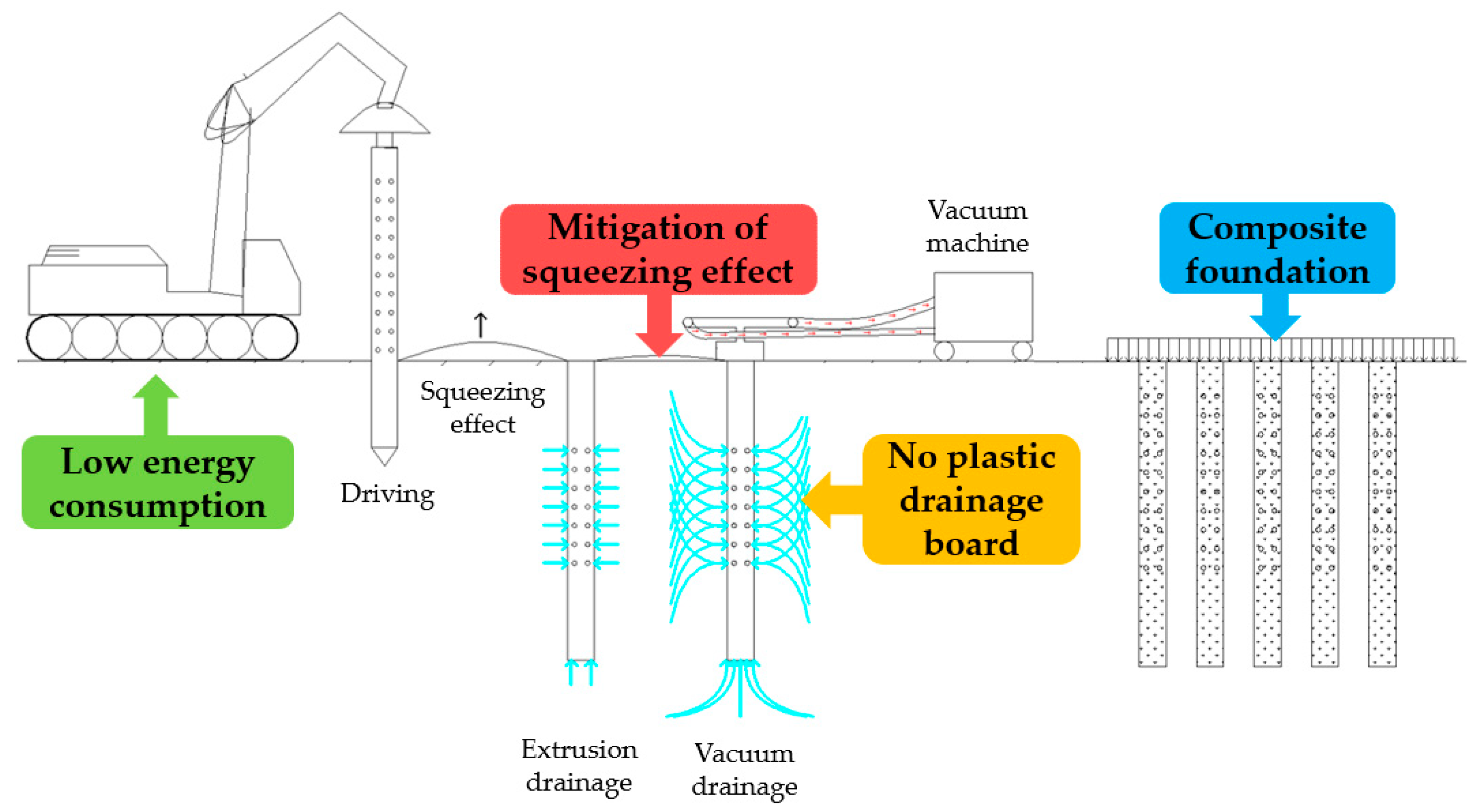
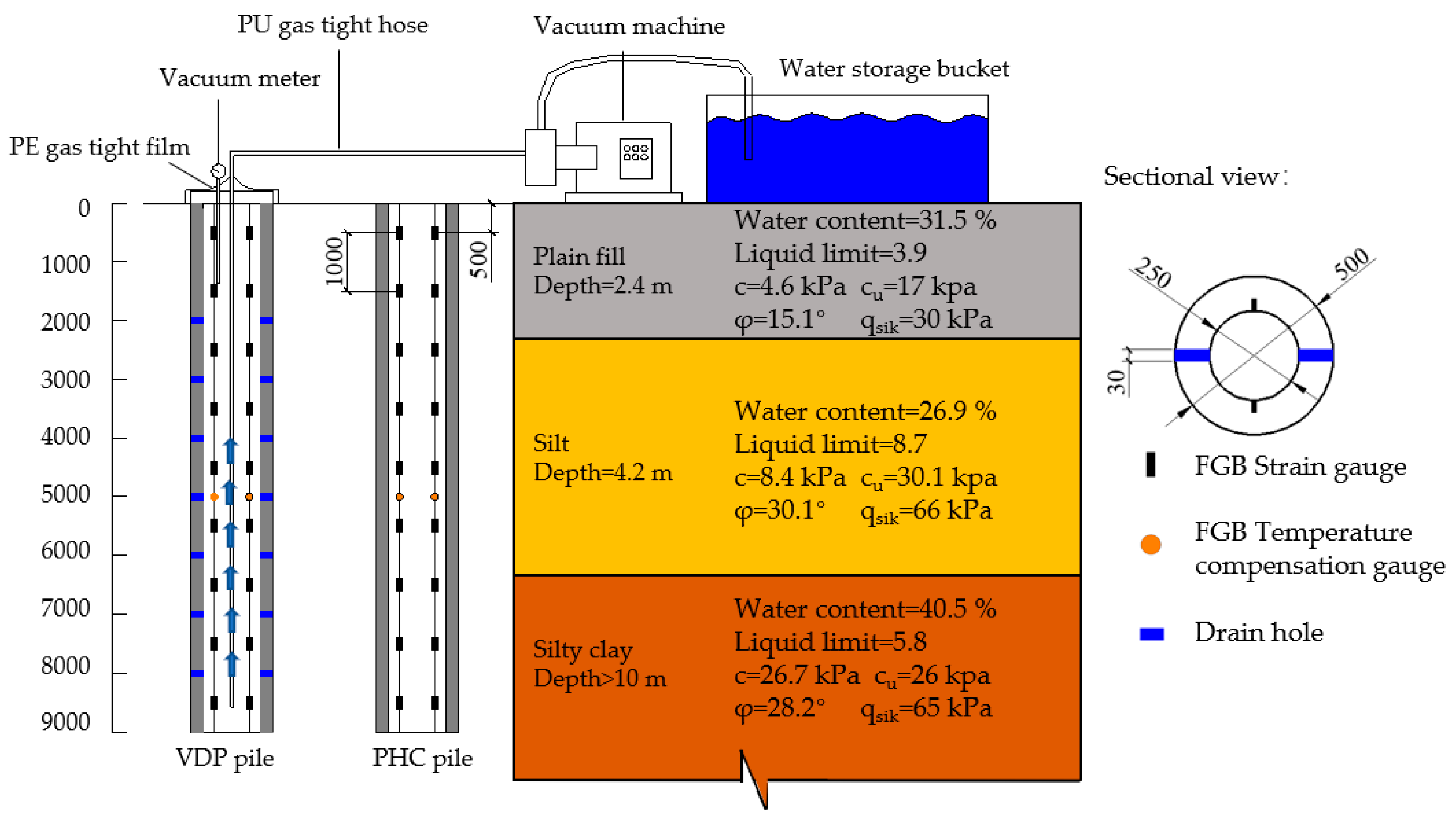
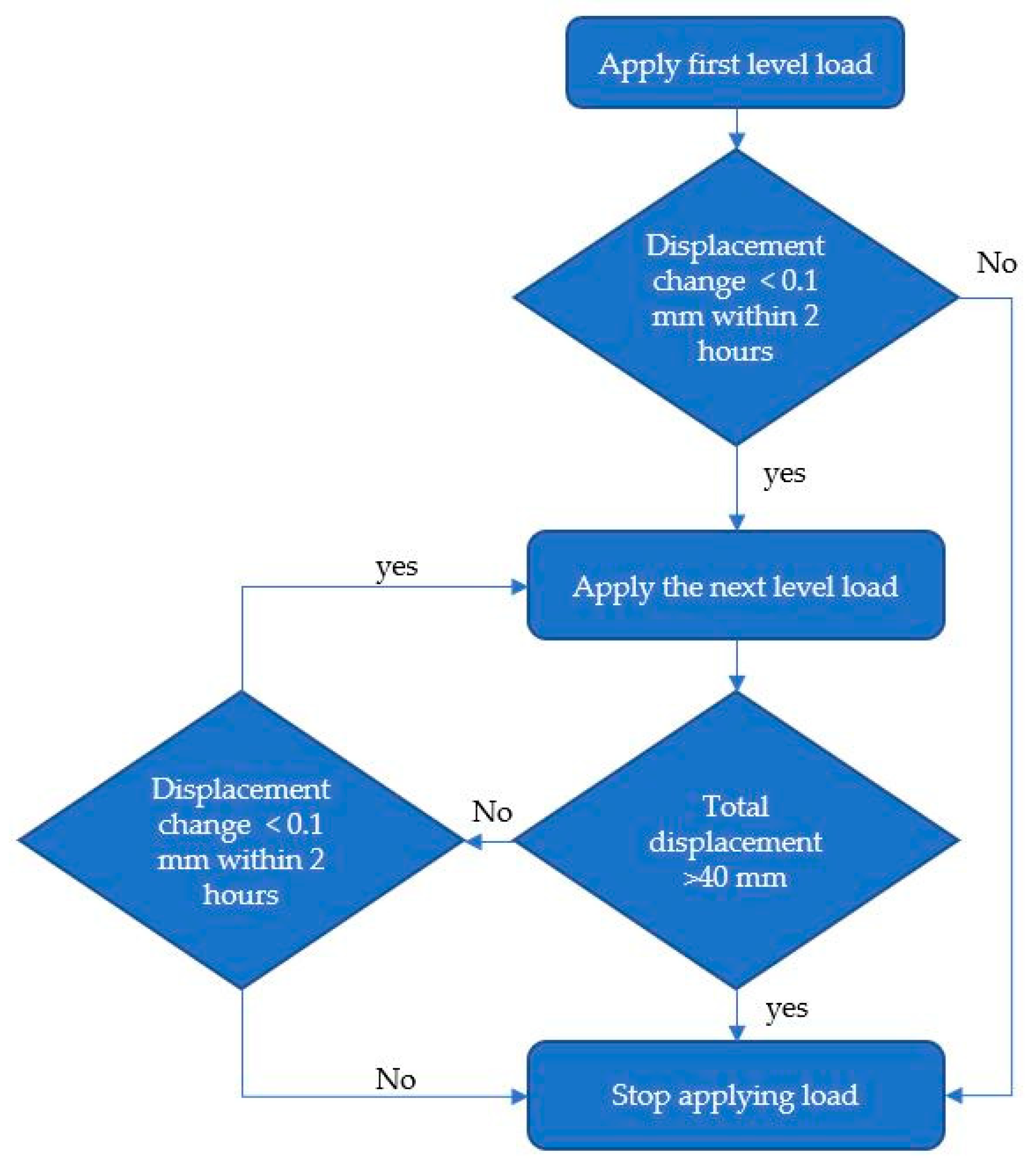
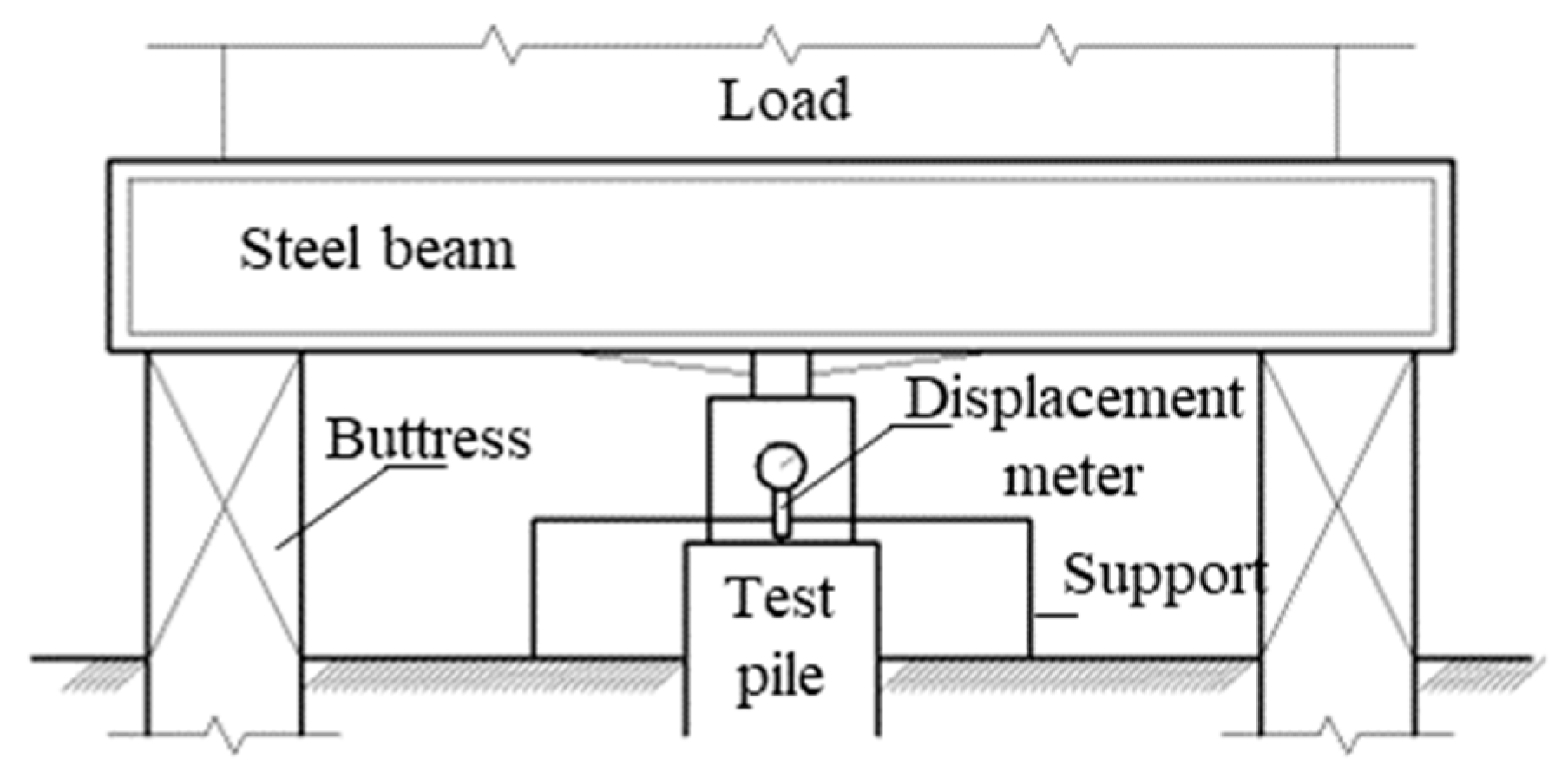
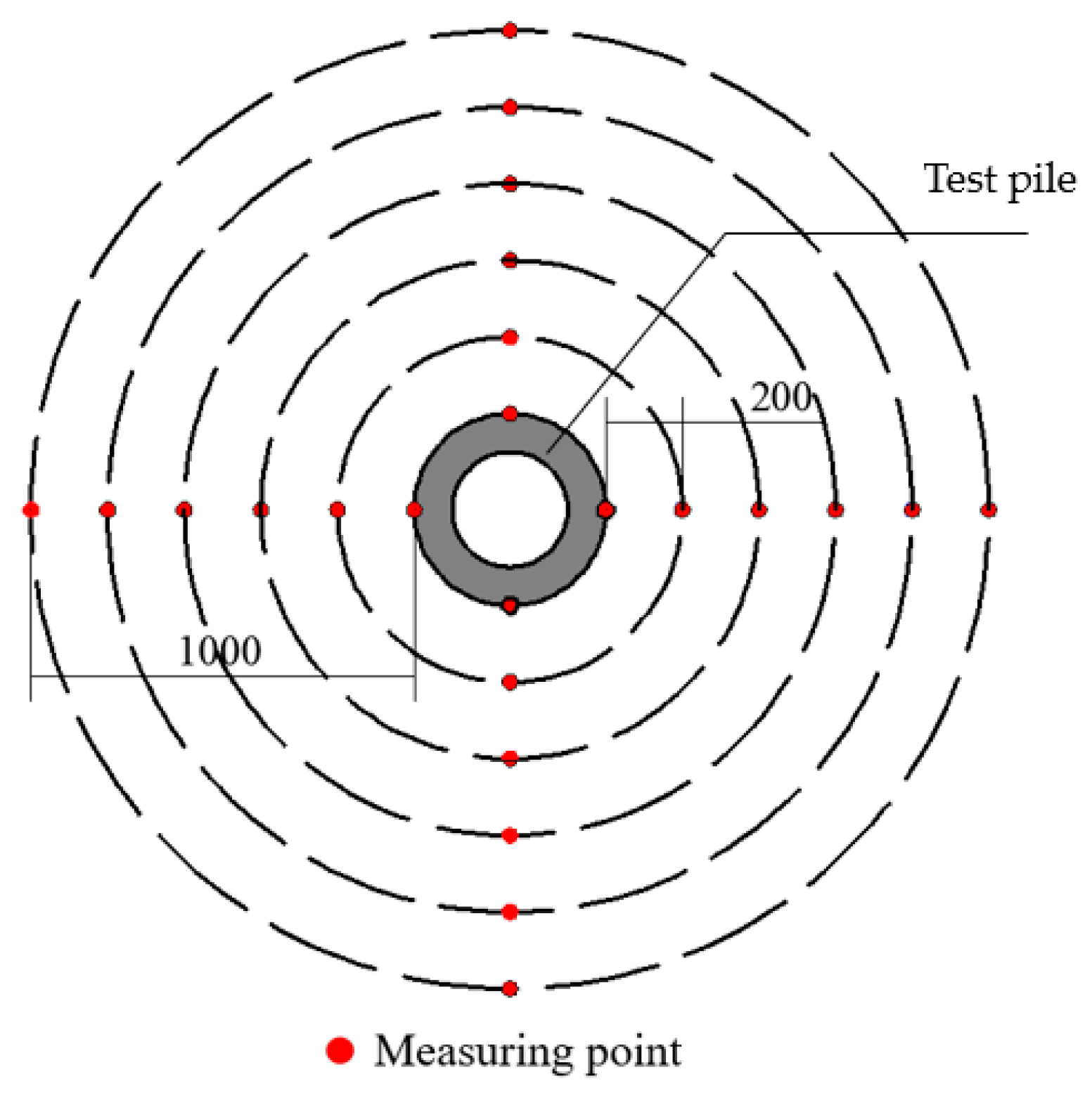
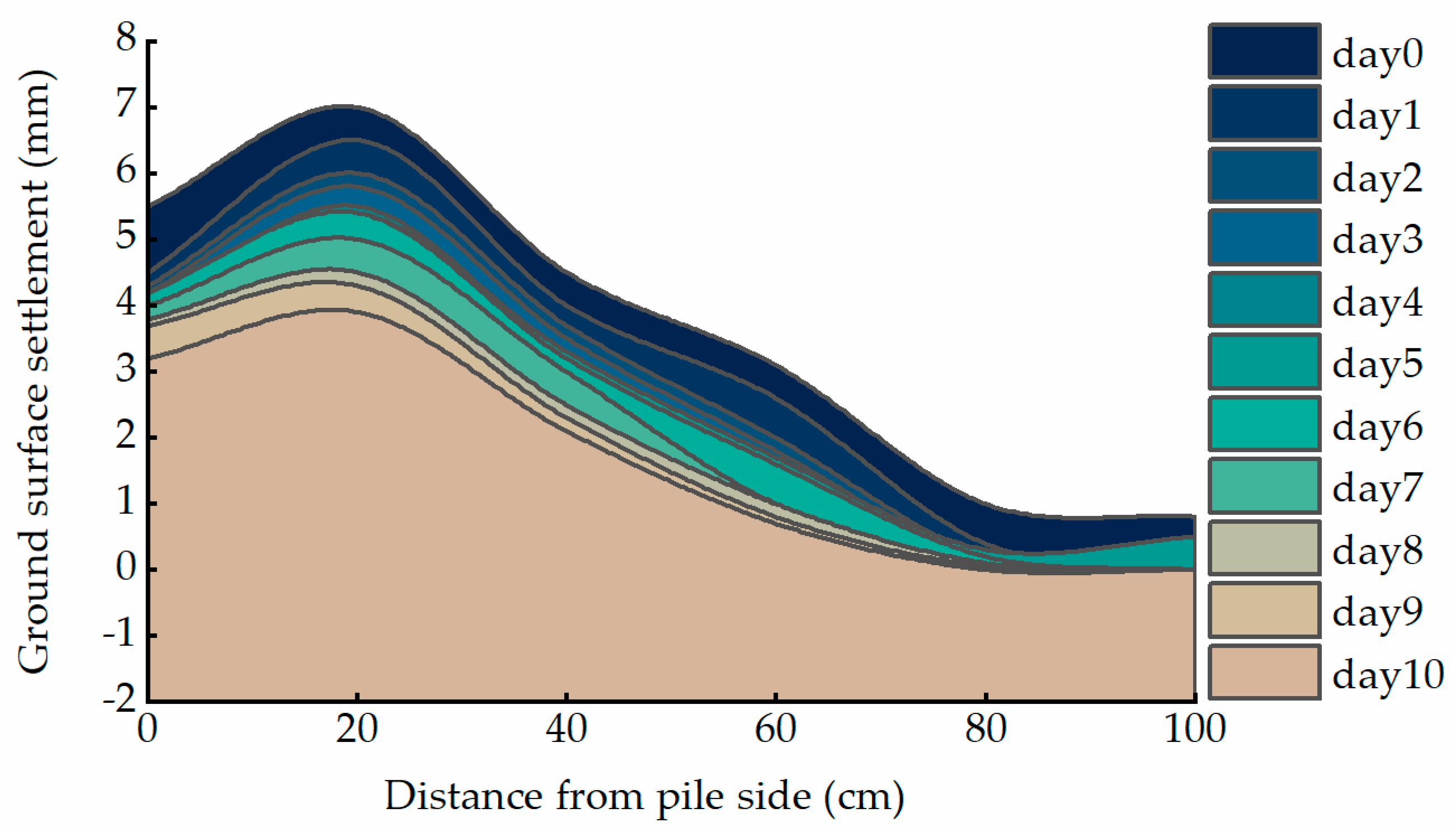
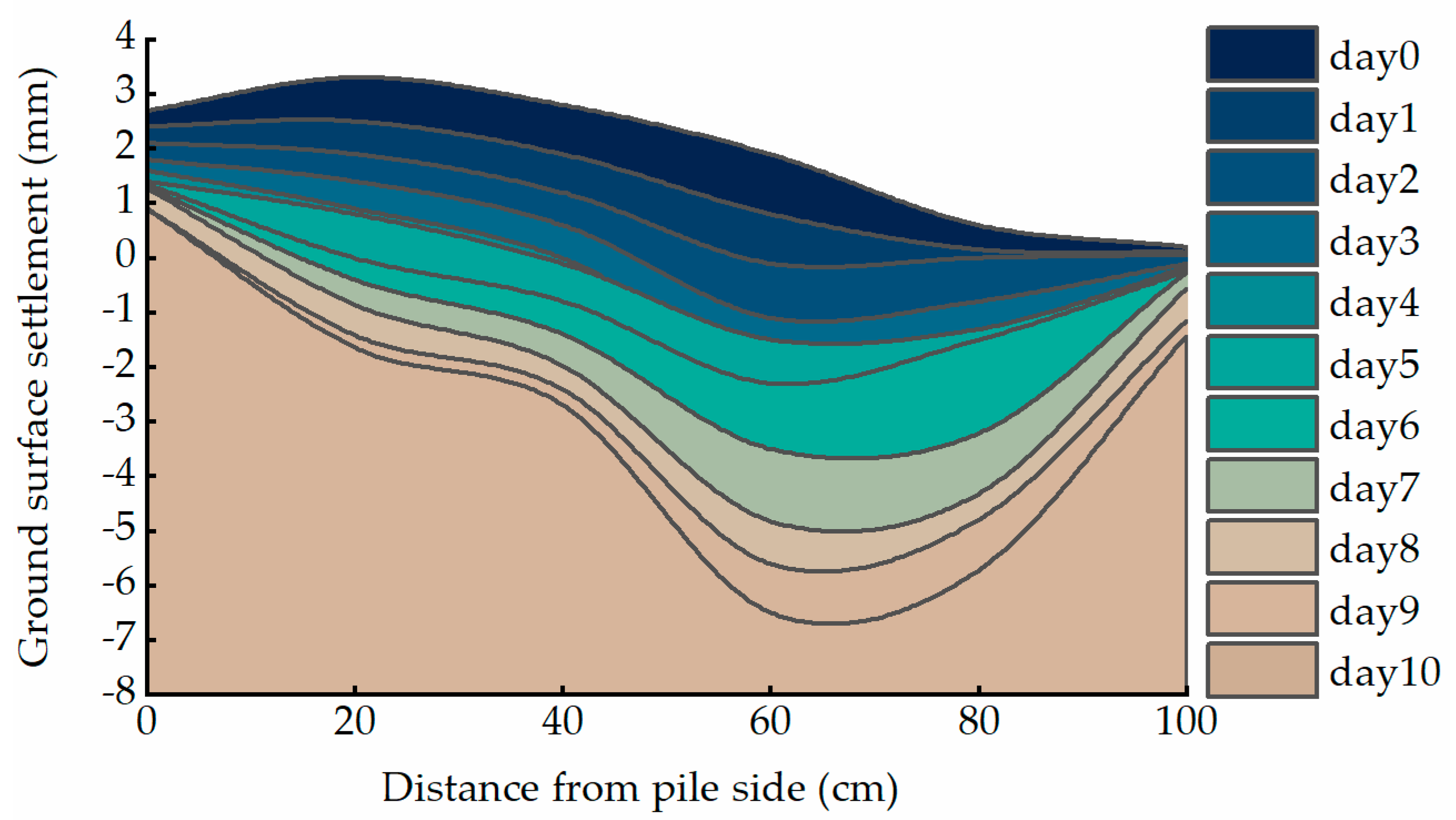
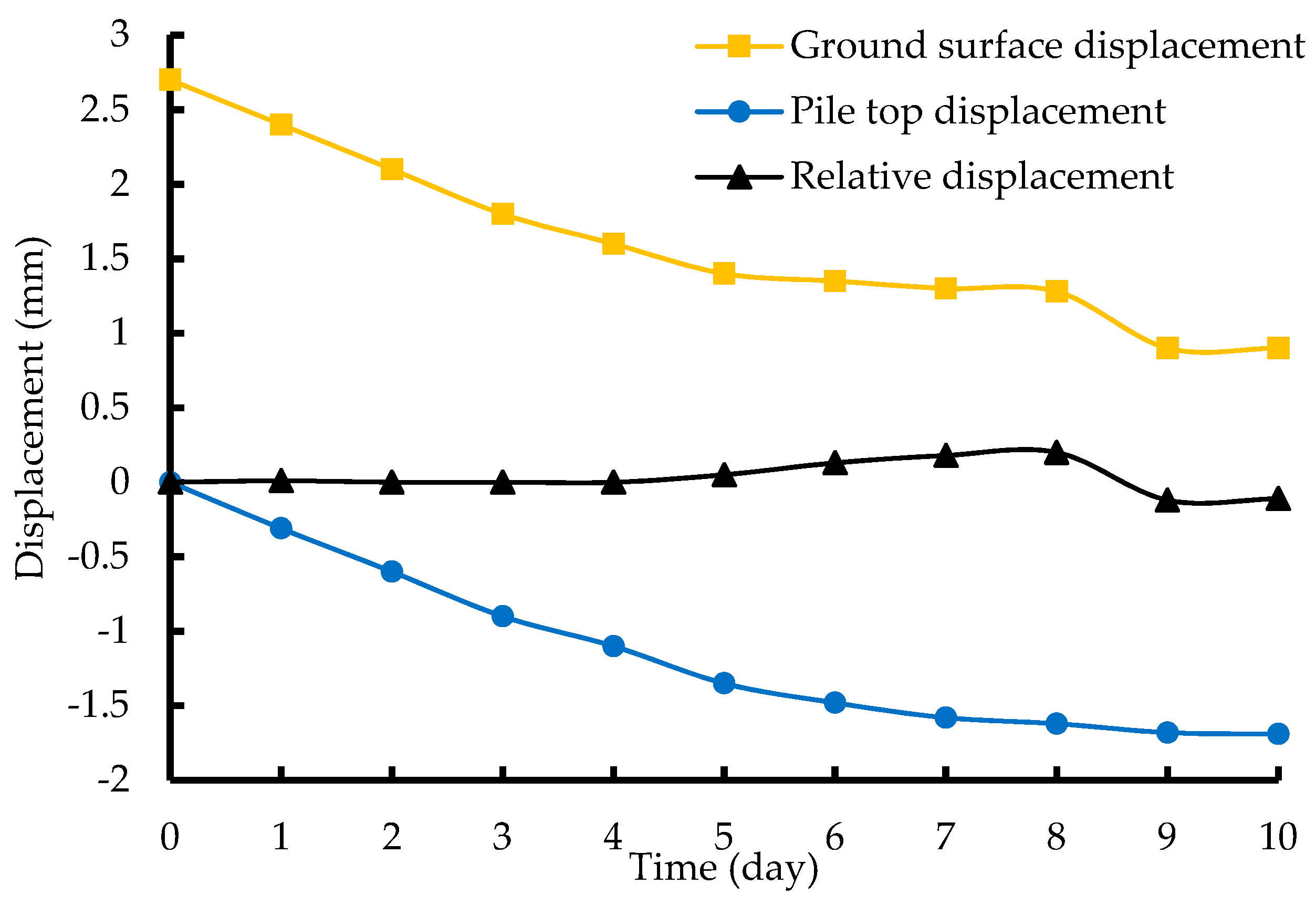
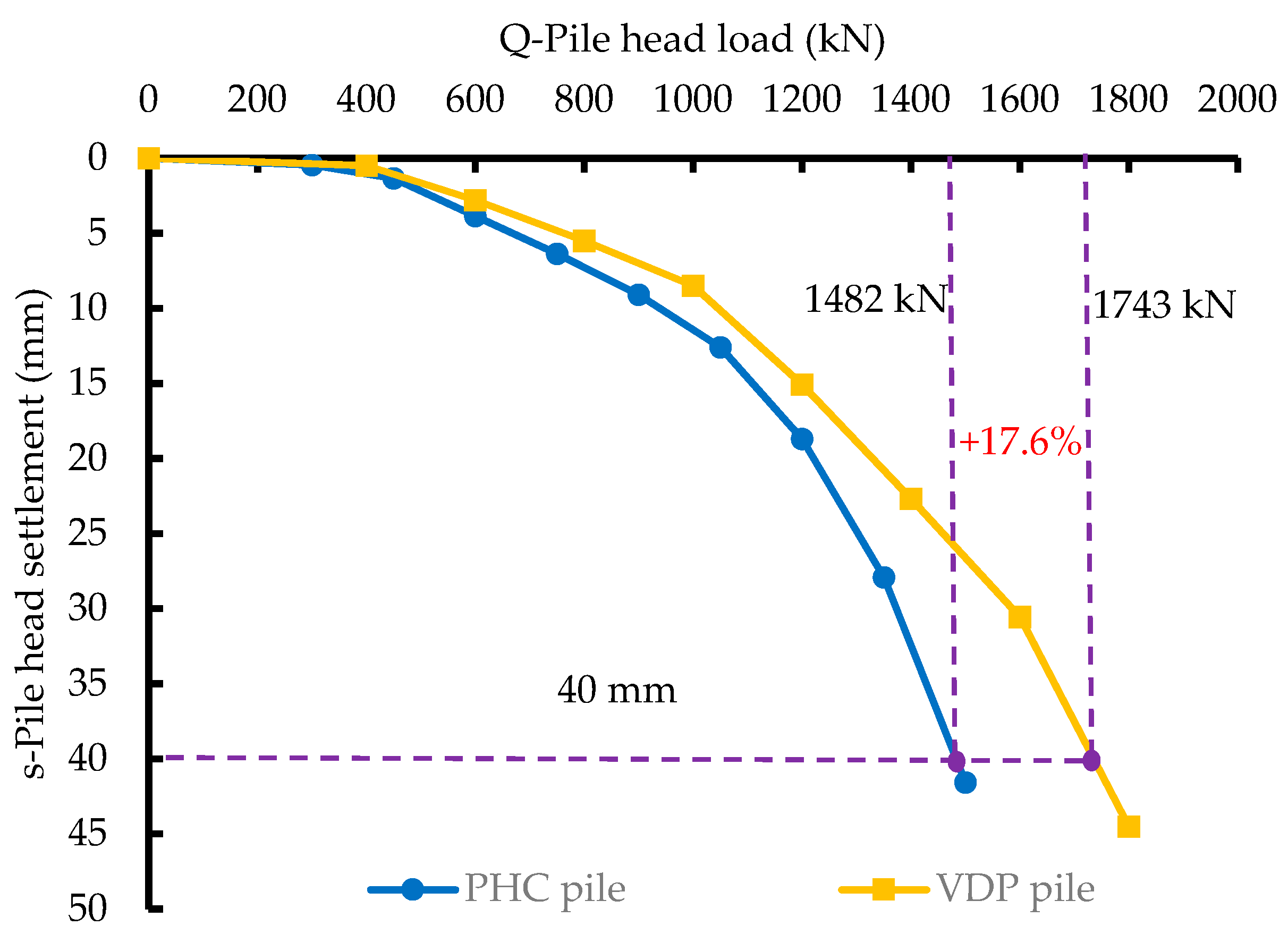
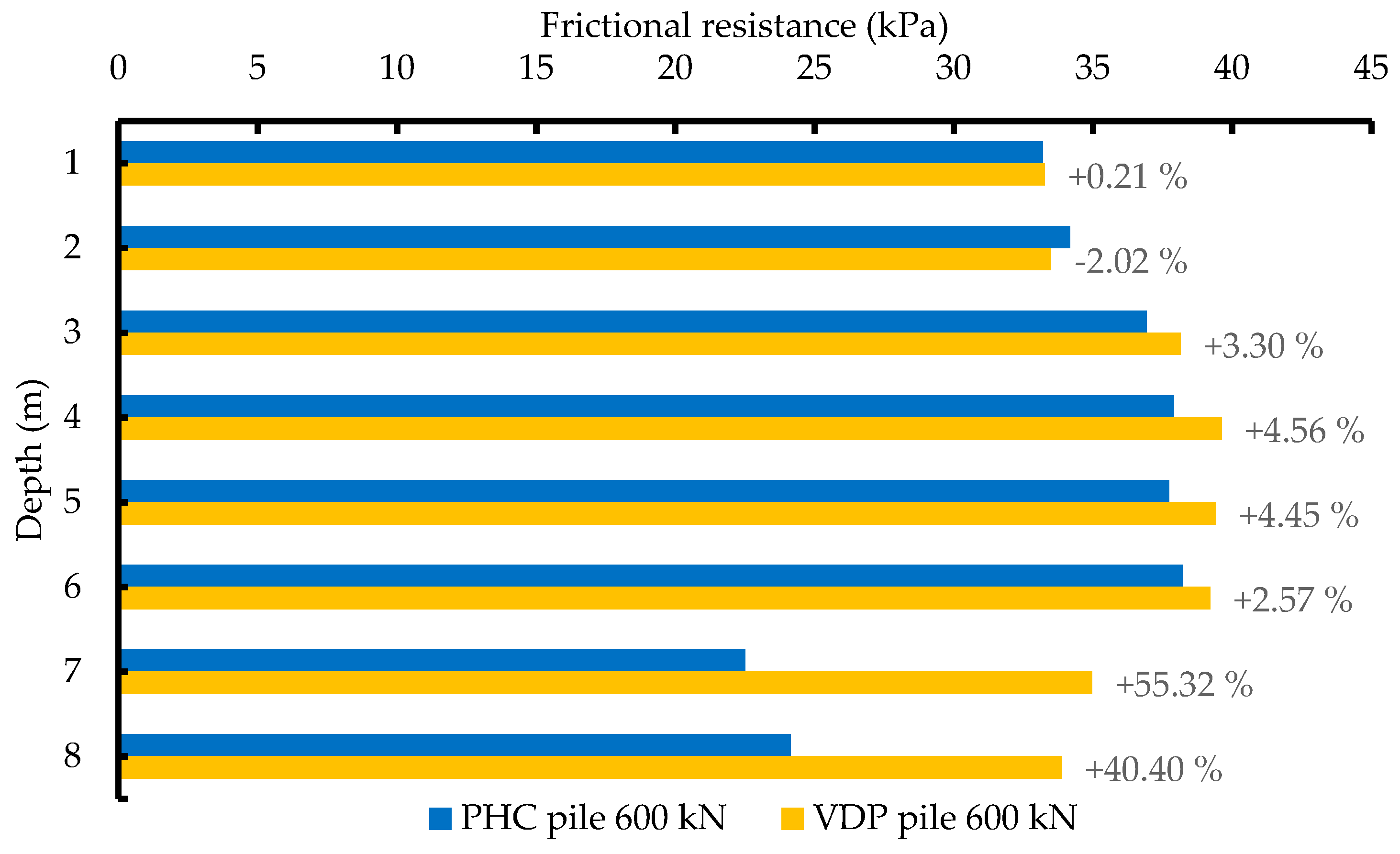
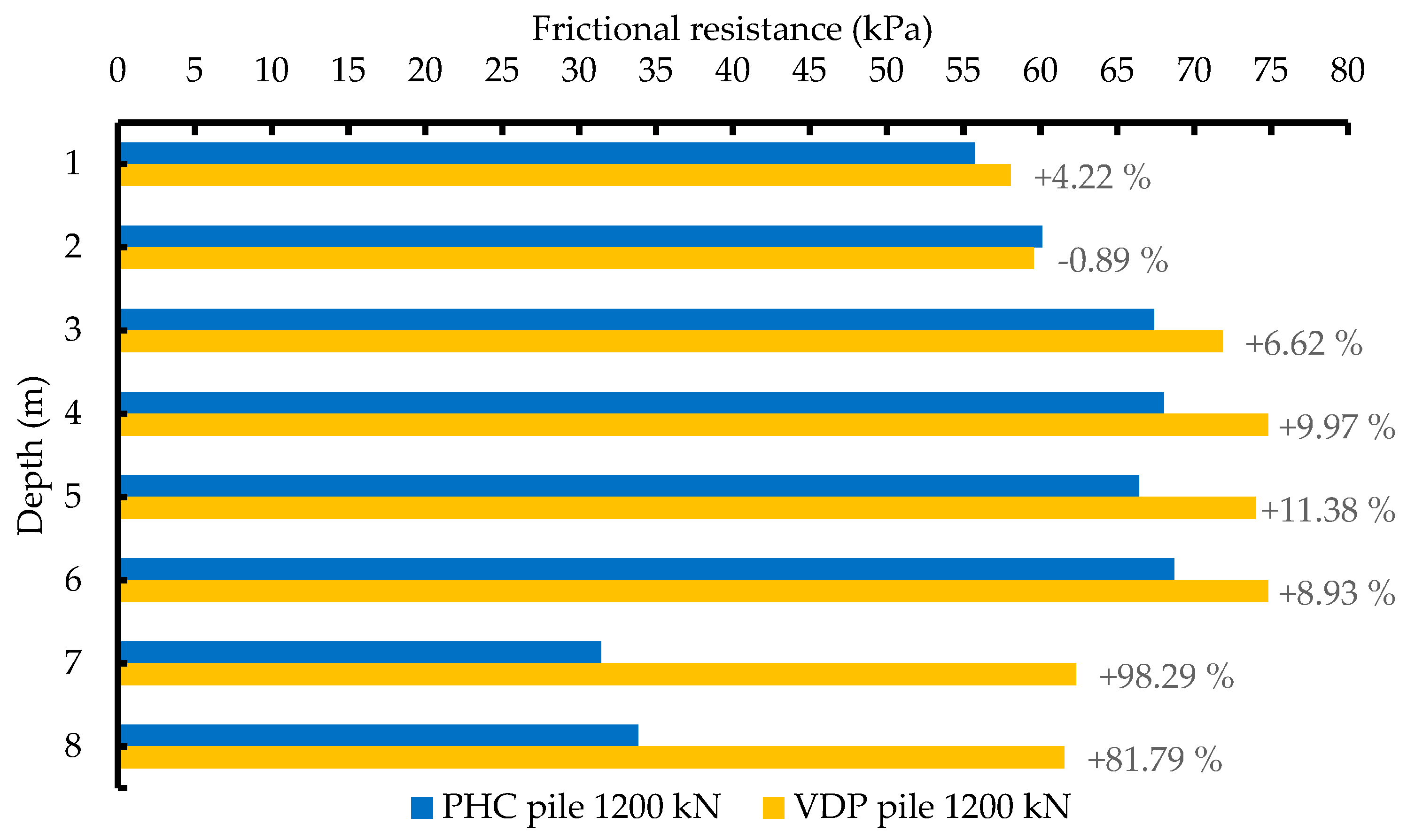
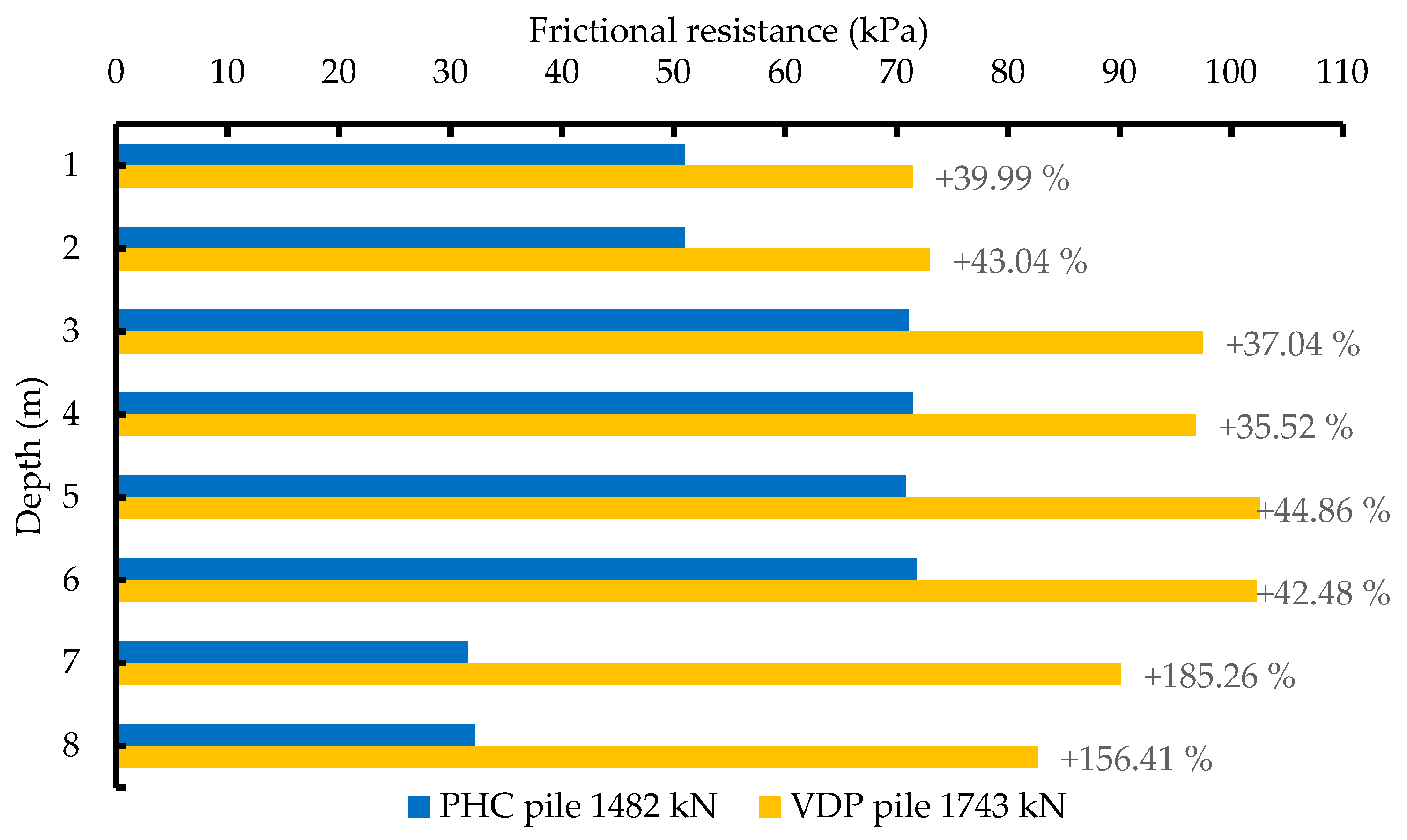
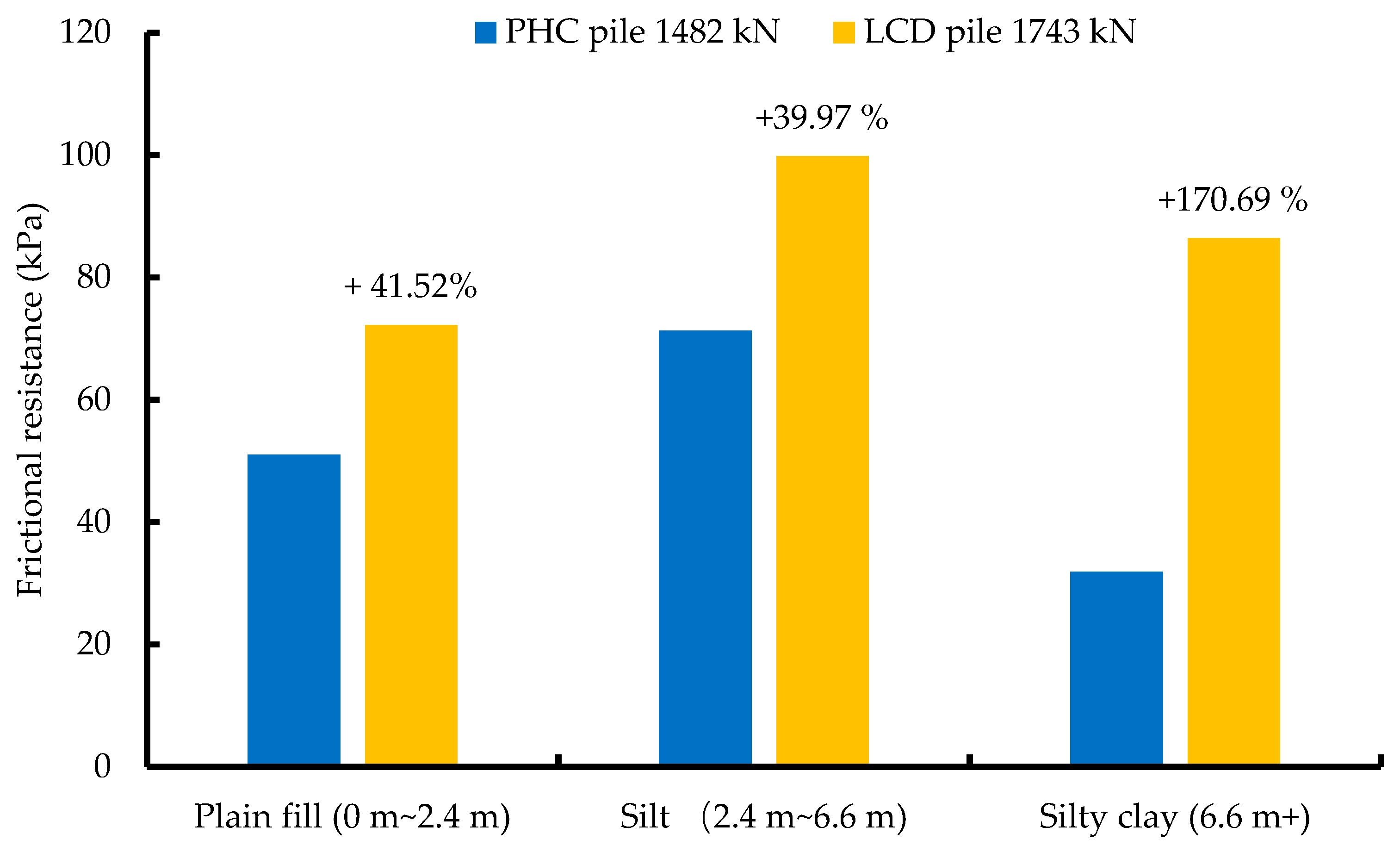
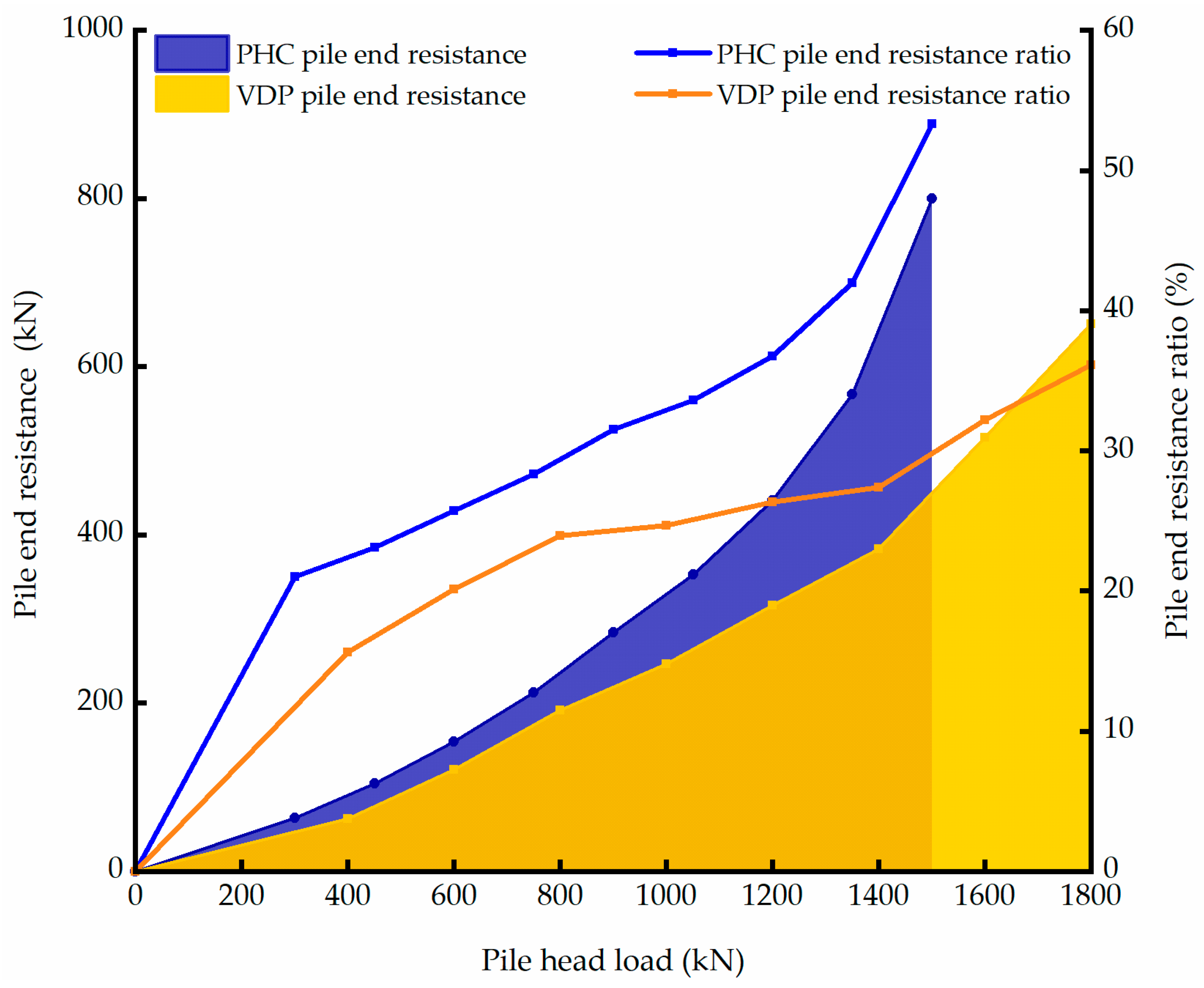
| Project | Unit | Material or Energy Consumption | Emission Factor (kg/Unit) | Carbon Emissions (kg) | |||
|---|---|---|---|---|---|---|---|
| Fabrication | Transport | Construction | Total | ||||
| Concrete | m3 | 2128 | \ | \ | 2128 | 470 | 1,000,160 |
| Steel | kg | 252,160 | \ | 1942 | 254,102 | 2 | 508,204 |
| PVC | kg | 3000 | \ | \ | 3000 | 6.79 | 20,370 |
| Diesel oil | kg | \ | 5704 | 12,862 | 18,566 | 0.59 | 10,953 |
| Electricity | kw·h | 19,420 | \ | 8580 | 28,000 | 0.28 | 7840 |
| Coal | kg | 45,431 | \ | \ | 45,431 | 0.73 | 33,164 |
| Total carbon emissions for the whole process | 1,580,693 | ||||||
| Project | Unit | Material or Energy Consumption | Emission Factor (kg/Unit) | Carbon Emissions (kg) | |||
|---|---|---|---|---|---|---|---|
| Fabrication | Transport | Construction | Total | ||||
| Concrete | m3 | 1478 | \ | \ | 1478 | 470 | 694,660 |
| Steel | kg | 175,405 | \ | 1942 | 177,347 | 2 | 354,694 |
| Diesel oil | kg | \ | 3960 | 7761 | 11,721 | 0.59 | 6915 |
| Electricity | kw·h | 13,480 | \ | 5842 | 19,322 | 0.28 | 5410 |
| Coal | kg | 31,537 | \ | \ | 31,537 | 0.73 | 23,022 |
| Total carbon emissions in the whole process | 1,084,701 | ||||||
Disclaimer/Publisher’s Note: The statements, opinions and data contained in all publications are solely those of the individual author(s) and contributor(s) and not of MDPI and/or the editor(s). MDPI and/or the editor(s) disclaim responsibility for any injury to people or property resulting from any ideas, methods, instructions or products referred to in the content. |
© 2023 by the authors. Licensee MDPI, Basel, Switzerland. This article is an open access article distributed under the terms and conditions of the Creative Commons Attribution (CC BY) license (https://creativecommons.org/licenses/by/4.0/).
Share and Cite
Lin, W.-K.; Tang, X.-W.; Zou, Y.; Liang, J.-X.; Li, K.-Y. Research on the Bearing Capacity and Sustainable Construction of a Vacuum Drainage Pipe Pile. Sustainability 2023, 15, 7555. https://doi.org/10.3390/su15097555
Lin W-K, Tang X-W, Zou Y, Liang J-X, Li K-Y. Research on the Bearing Capacity and Sustainable Construction of a Vacuum Drainage Pipe Pile. Sustainability. 2023; 15(9):7555. https://doi.org/10.3390/su15097555
Chicago/Turabian StyleLin, Wei-Kang, Xiao-Wu Tang, Yuan Zou, Jia-Xin Liang, and Ke-Yi Li. 2023. "Research on the Bearing Capacity and Sustainable Construction of a Vacuum Drainage Pipe Pile" Sustainability 15, no. 9: 7555. https://doi.org/10.3390/su15097555
APA StyleLin, W.-K., Tang, X.-W., Zou, Y., Liang, J.-X., & Li, K.-Y. (2023). Research on the Bearing Capacity and Sustainable Construction of a Vacuum Drainage Pipe Pile. Sustainability, 15(9), 7555. https://doi.org/10.3390/su15097555








